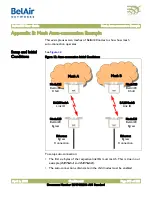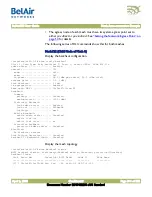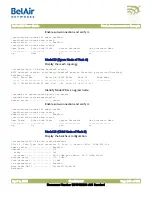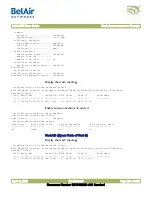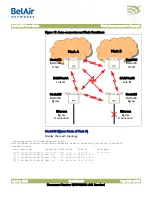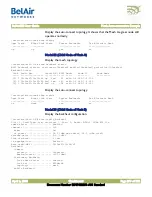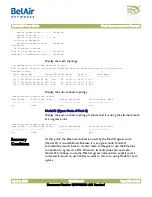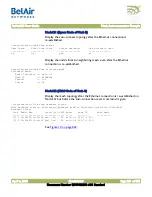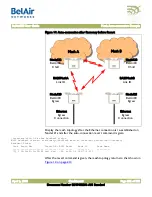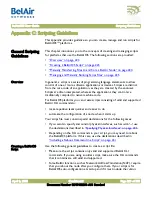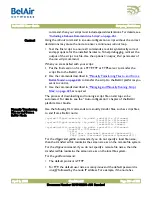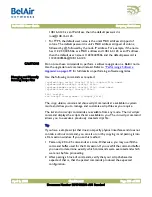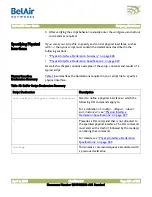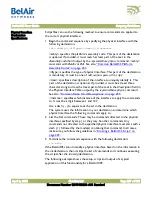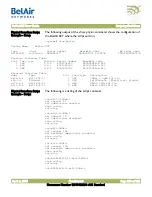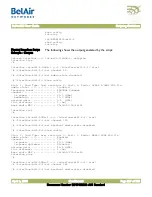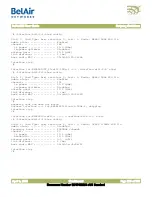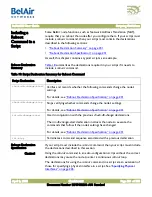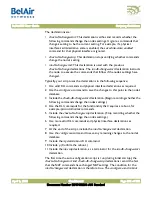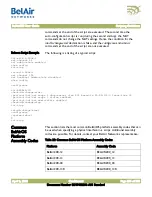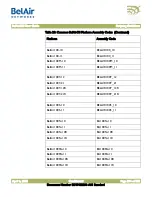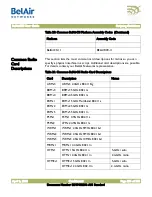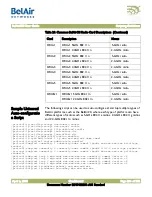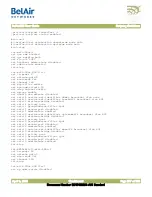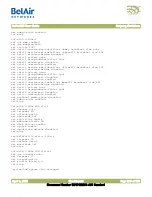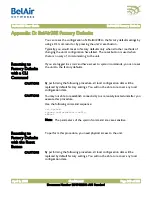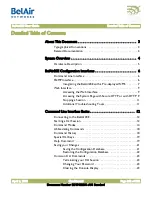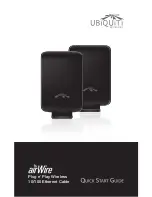
BelAir20E User Guide
Scripting Guidelines
April 2, 2012
Confidential
Document Number BDTM02201-A01 Standard
Physical Interface
Declaration
Specifications
Script files can use the following method to ensure commands are applied to
the correct physical interface:
1 Begin the command sequence by specifying the physical interface with the
following declaration:
int[-<asbly>]-<iftype>[-<desc>]-<instance>
<asbly> specifies the platform’s assembly code. This part of the declaration
is optional. If provided, it must match at least part of the text in the
Assembly code
field output by the
/system/show phyinv
command. <asbly>
must start with
BelAir
or
BA
. See also
.
<iftype> specifies the type of physical interface. This part of the declaration
is mandatory. It must be one of
wifi
,
wimax
,
pwe
,
eth
or
opt.
<desc> specifies a description of the interface to uniquely identify it. This
part of the declaration is optional. If provided, it must be at least three
characters long and match at least part of the text in the
Description
field in
the Physical Interface Table output by the
/system/show phyinv
command.
“Common Radio Card Descriptions” on page 235
<instance> specifies which instance of the interface to apply the commands
to. It must be a digit between 1 and 127.
Use a dash ( - ) to separate each part in the declaration.
The system uses the information in your declaration to determine which
physical interface the following commands apply to.
2 List the CLI commands. These may be commands directed to the physical
interface specified by step
or they may be other commands. Any
commands not directed to the specified physical interface must start with a
slash ( / ) followed by the mode(s) containing that command. In all cases,
make sure you follow the guidelines in
“Creating a BelAirOS Script” on
.
3 Terminate the command sequence with the following declaration:
int-stop
If the BelAirOS cannot identify a physical interface based on the information in
the
int
declaration, then it skips the list of commands and continues executing
the script after the
int-stop
declaration.
The following example shows the setup, script and output of a typical
application of this functionality for a BelAir100T.

